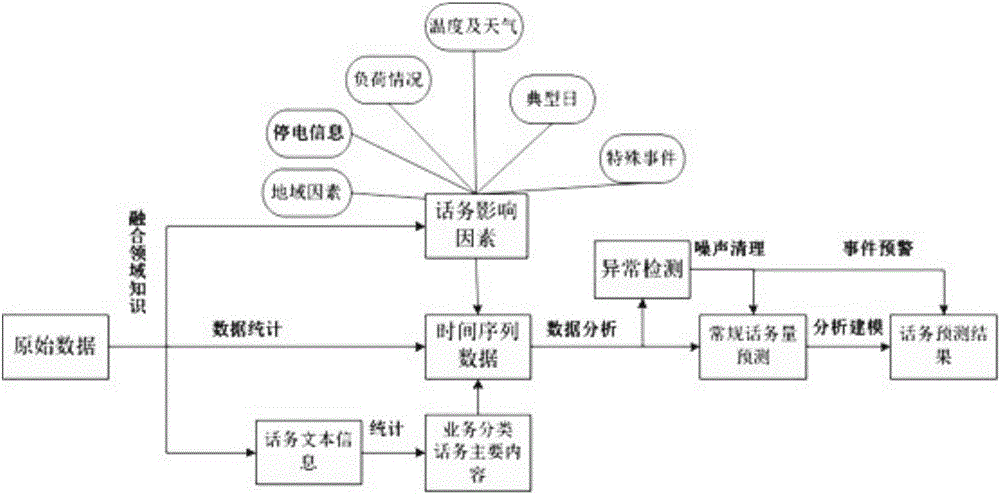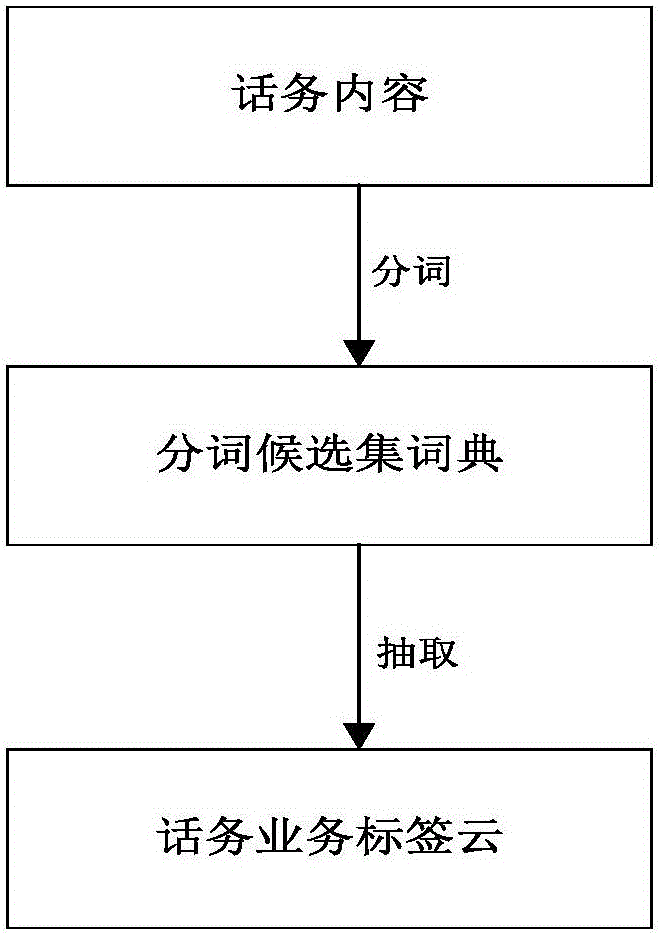Prediction method for incoming call traffic of power client service center
A technology of customer service center and forecasting method, which is applied in the field of forecasting incoming call traffic of electric power customer service center, can solve problems such as the inability to scientifically measure the degree of influence, inability to automatically correct the forecast model, analysis and verification of manual experience, etc., to improve lean The effect of optimizing the management level, saving the cost of manual forecasting, and shortening the response time
- Summary
- Abstract
- Description
- Claims
- Application Information
AI Technical Summary
Problems solved by technology
Method used
Image
Examples
Embodiment 1
[0031] figure 1 Flow chart of the forecasting method for the incoming call traffic of the electric power customer service center, such as figure 1 As shown, the present invention provides a method for predicting incoming call traffic of a power customer service center, comprising the following steps:
[0032] Step 1: analyzing the content information of the call service, counting the types of the call service, and summarizing the main problems accepted by the customer service center;
[0033] Step 2. Based on the historical data of 3-5 years, determine the noise points in the data, analyze the factors that affect the sudden increase and decrease of the traffic volume, and confirm the key influencing factors and the influencing values of the factors;
[0034] The third step is to analyze the change trend of the traffic according to the time period, extract the periodic law of the traffic, and establish the prediction model of the traffic.
Embodiment 2
[0036] In step one, if figure 2 As shown in Fig. 1, the text is extracted from the original traffic service content information to generate traffic text information, and the text information is segmented on the basis of the existing traffic influencing factor word segmentation candidate dictionary, the business tag cloud is established, and the traffic service acceptance problem is analyzed. Classification, summing up the primary and secondary levels of traffic services, and statistics of traffic service categories.
[0037] In step 2, the analysis of the changing trend of the traffic volume is based on historical data, and the annual overall traffic volume, the monthly overall traffic volume, the daily traffic volume within a month, and the intra-week traffic volume are respectively analyzed in a visual statistical method. Daily and hourly fluctuation trends in a single day,
[0038] The traffic volume forecast is based on the monthly traffic volume data, and the noise impa...
Embodiment 3
[0052] Wherein, the daily and hourly traffic data of a week is used to determine the distribution of traffic volume and remove noise points, and the time series decomposition and addition model of traffic volume prediction is established.
[0053] Steps to remove noise: Replace the noise data determined in step 2 with the average data of the noise period in the data of two adjacent days.
[0054] Constructing the Time Series Decomposition and Addition Model of Traffic at Time k
[0055]
[0056] in, is the hourly average value, that is, the average traffic volume of each hour in a day, and there are 24 in total; S k (weekday) is the weekly adjustment factor, there are 7 in total; I k is the residual item, which belongs to the fitting normal noise level item in the time series decomposition.
PUM
 Login to View More
Login to View More Abstract
Description
Claims
Application Information
 Login to View More
Login to View More - R&D Engineer
- R&D Manager
- IP Professional
- Industry Leading Data Capabilities
- Powerful AI technology
- Patent DNA Extraction
Browse by: Latest US Patents, China's latest patents, Technical Efficacy Thesaurus, Application Domain, Technology Topic, Popular Technical Reports.
© 2024 PatSnap. All rights reserved.Legal|Privacy policy|Modern Slavery Act Transparency Statement|Sitemap|About US| Contact US: help@patsnap.com










